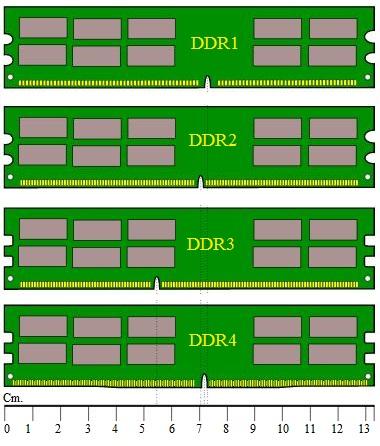Understanding DDR SDRAM: A Comprehensive Guide
Advertisement
SDRAM, or Synchronous Dynamic Random Access Memory, is a type of memory that synchronizes with the CPU’s clock signal, ensuring efficient data transfer. Let’s delve into the world of SDRAM, exploring its variations and improvements over time.
SDR vs. DDR SDRAM
There are two primary types of SDRAM: SDR (Single Data Rate) and DDR (Double Data Rate).
-
SDR SDRAM: In SDR SDRAM, the same frequency is used for input/output operations, the bus clock, and the internal clock. For instance, PC133 SDRAM operates at 133 MHz for all these functions. SDR SDRAM can either read or write data one at a time in a single clock cycle.
-
DDR SDRAM: DDR SDRAM doubles the data transfer rate by transferring data on both the rising and falling edges of the clock signal, without increasing the clock frequency. DDR SDRAM also boasts a 2-bit prefetch buffer size, twice that of SDR SDRAM.
Now, let’s explore the evolution of DDR SDRAM, from DDR1 to DDR4.
DDR1 SDRAM (or simply DDR)
- Transfers data on both rising and falling edges of the clock.
- Clock speed: 133 to 200 MHz
- Prefetch buffer size: 2 bits
- Operating voltage: 2.5V
- Data transfer rate: 266 to 400 MT/s (MegaTransfers per Second)
- Examples: DDR266, DDR400
DDR2 SDRAM
- Operates the external data bus two times faster compared to DDR1.
- Clock speed: 133 to 200 MHz
- Operating voltage: 1.8 V
- Prefetch buffer size: 4 bits
- Data transfer rate: 533 to 800 MT/s (MegaTransfers per Second)
- Examples: DDR2 533, DDR2 800
DDR3 SDRAM
- Consumes approximately 40% less power than DDR2, thanks to a lower operating voltage of 1.5V.
- Operating voltage: 1.5 V
- Prefetch buffer size: 8 bits
- Data transfer rate: 800 to 1600 MT/s (MegaTransfers per Second)
- Examples: DDR3L-800, DDR3L-1066, DDR3L-1333, DDR3L-1600
- Special functions: ASR (Automatic Self Refresh), SRT (Self Refresh Temperature)

DDR4 SDRAM
- Offers even lower operating voltage and faster transfer rates than previous DDR versions.
- Operating voltage: 1.2V
- Data transfer rate: 2133 to 3200 MT/s
- Example: DDR4-2400
- Processes four data units in a single clock cycle.
- Efficiency: Better than DDR3.
- Special functions: DBI (Data Bus Inversion), CRC, CA parity
DDR1 vs. DDR2 vs. DDR3 vs. DDR4: A Comparison
| Specifications | SDR SDRAM | DDR1 | DDR2 | DDR3 | DDR4 |
|---|---|---|---|---|---|
| Internal Rate (MHz) | 100 to 166 | 133 to 200 MHz | 133 to 200 MHz | 133 to 200 MHz | 133 to 200 MHz |
| Bus clock (MHz) | 100 to 166 | 133 to 200 | 266 to 400 | 533 to 800 | 1066 to 1600 |
| Prefetch | 1n | 2n | 4n | 8n | 8n |
| Data rate (MT/s) | 100 to 166 | 266 to 400 | 533 to 800 | 1066 to 1600 | 2133 to 3200 |
| Transfer rate (GB/s) | 0.8 to 1.3 | 2.1 to 3.2 | 4.2 to 6.4 | 8.5 to 14.9 | 17 to 21.3 |
| Voltage | 3.3 | 2.5/2.6 | 1.8 | 1.35/1.5 | 1.2 |
The progression from DDR1 to DDR4 (and now DDR5) represents significant advancements in DRAM technology, offering improved speed, power efficiency, and overall system performance. Be sure to also explore DDR5 and LPDDR5 for their unique features and key differences.
Advertisement
 RF
RF

